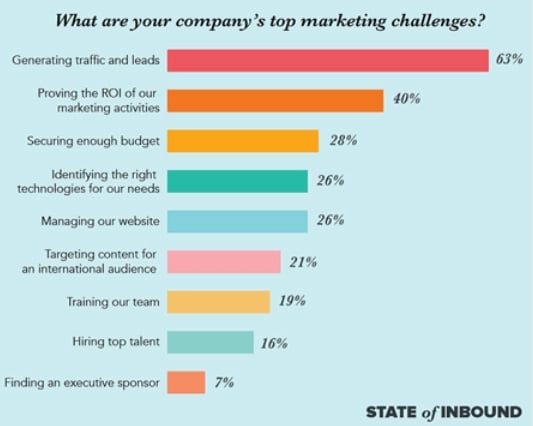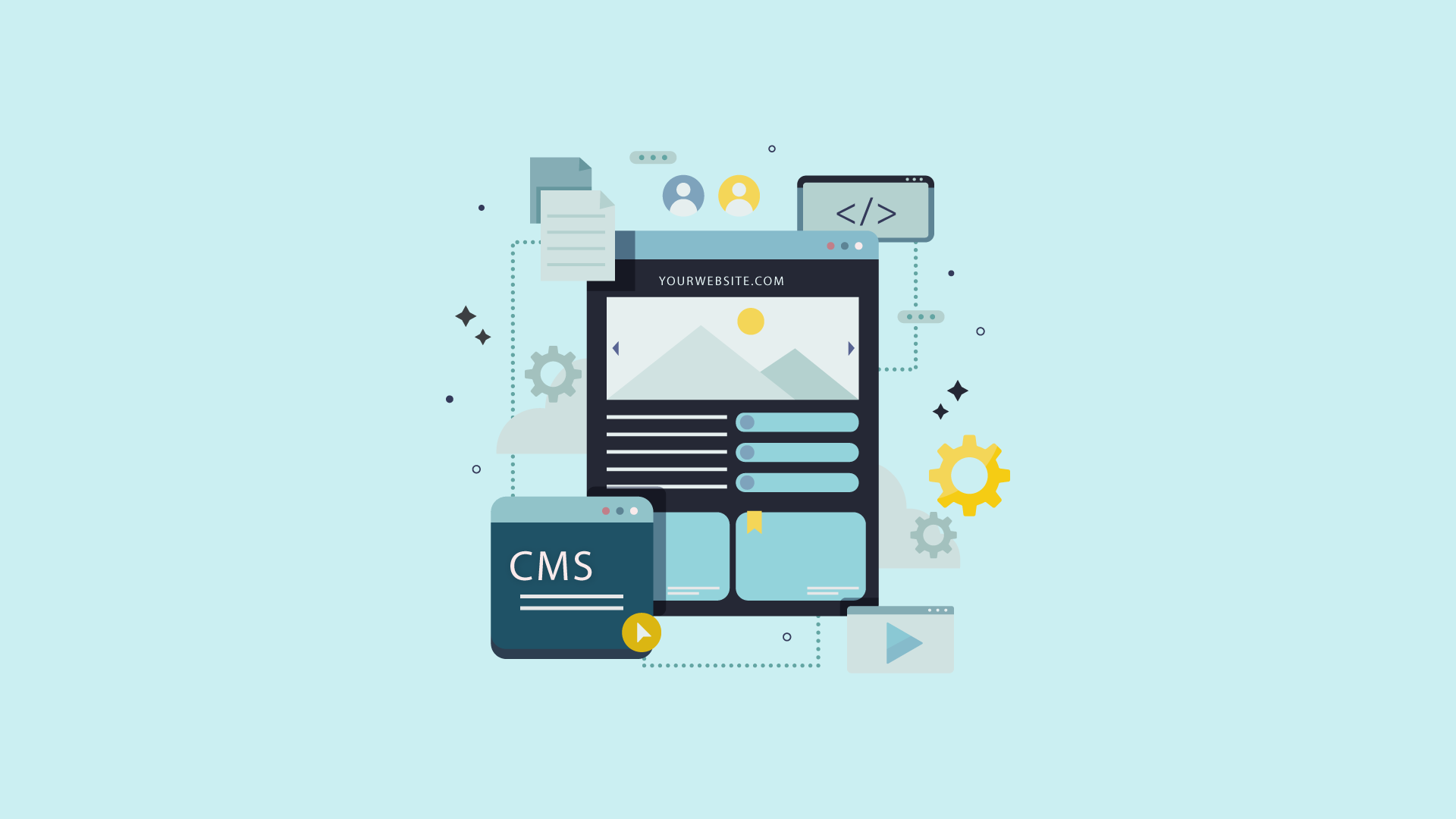Do you want to convert visitors into customers or leads? If you answered yes, then optimizing your website will be key to reaching both goals.
An optimized website has a higher conversion rate because it is easier to navigate, has faster loading times, and has a better overall user experience. In other words, these websites perform well at converting traffic to sales.
There are several ways to boost the performance of your website. Some include using SEO technologies such as meta tags, alt attributes, heading tags, internal links, and page titles. Others involve using responsive designs, mobile-friendly web design, and social media marketing.
In this article, I am going to share with you some strategies on how to optimize your website for leads and conversions.
| Website development Website development is a catch-all term for the work that goes into building a website. This includes everything from markup and coding to scripting, network configuration, and CMS development. |
What is a Lead?
A lead is anyone who indicates interest in a business's products or services in some way, shape, or form. Typically, leads are people who submit personal data for offers, trials, or subscriptions, rather than being randomly contacted by salespeople.
Suppose you take an online survey to learn more about caring for your car. After a few days, you get an email from the automobile manufacturer asking to provide you with useful tips on maintaining your vehicle. That's a lead.
This process would be far less invasive than if they'd just contacted you out of the blue, without knowing anything about you, right? And it's much better for everyone involved, including you.
What is Lead Generation?
Lead generation is the process of generating qualified sales leads. In simple terms, it refers to the act of attracting prospects to your product or service. Once you've done that, there are several ways to nurture those leads until they're ready to buy.
The most common way to find leads is through paid advertising. There are many different types of paid advertising, including display ads, sponsored listings, social media marketing, email campaigns, etc.
Another approach is offering freebies—things like ebooks, whitepapers, webinars, etc.—to encourage visitors to sign up for your list. This is called lead generation.
That usually resonates best, so that's exactly what lead generation is: It's an effective method for warming up potential customers to a company and encouraging them to take action.
Why do you need Lead Generation?
When someone you don't know takes an interest in your business, it's more likely they'll become a client.
Lead generation is the process of turning website visitors into sales-qualified leads for your sales team. It's the second stage of the inbound marketing methodology, and it's when you're ready to start converting your audience into leads.
1. A User-friendly Design
Inbound marketers are always looking for ways to improve the experience of their customers, and one way to do that is to make sure their website is user-friendly. If someone lands on your site and doesn't know where to go next, chances are they'll just bounce off.
That's why it's important to make sure every page of your site is clear about what it wants visitors to do next. This includes making sure there are call-to-action buttons or forms on each page—and that that calls-to-action match up with the goals of that page.
If you're trying to sell something, make sure you've got a "Buy Now" button somewhere on your landing page. And if you're trying to collect information, make sure you've collected the data you want before asking people to fill out a form.
The goal here is simple: make it easy for your customer to find what he or she is looking for, and make sure they don't feel like they're being forced into doing anything.
2. Speed
Website speed is important. Not just because it affects how fast your visitors navigate around your site, but because it affects how much money you make. A slow-loading website can cost you sales, revenue, and customer trust.
How quickly should a webpage load? According to skilled.co, 47% of customers expect a web page to be loaded within two seconds or less.
The average person spends about three seconds looking at each webpage. And according to research conducted by HubSpot, website conversion rates drop by an average of 4.42% with each additional second of load time (between seconds 0-5).
There are several things you can do to increase your site's performance, including:
-
Using a CDN
A Content Delivery Network (CDN) is like having a bunch of servers scattered across the globe. When someone visits your site, the request goes out to the nearest server, where it gets sent to your web host. Your web host multiple computers are serving because multiple computers are serving up your files, and requests take less time to complete.
-
Optimized Images
Images account for nearly half of the bytes transferred over the internet. But many sites use images without optimizing them properly. For example, some images contain unnecessary metadata such as EXIF data, which slows down image downloads.
To avoid this problem, you need to compress all images on your site using tools like TinyPNG. You can also reduce the size of your images by resizing them to smaller sizes.
-
Minify CSS & JavaScript
CSS and JavaScript files are often largely due to the amount of code included. Minifying these files reduces the number of characters required to transfer them from the server to the browser.
3. Social Proof
Social proof is one of the most powerful forms of persuasion. When we see others doing something, whether it's online, offline, or both, we tend to believe that whatever they're doing must be good—even though there are no guarantees. This is because our brains look for patterns, and if everyone else is doing it, it must be safe.
This is why testimonials are so effective. Testimonials are one of the most powerful forms of social proof. Studies show that consumers prefer brands with positive reviews over those without.
To add credibility to your business, consider including testimonials on your site. You don't even have to ask permission from the customer; simply include a link to where they left feedback online.
A testimonial page can go a long way toward building trust and credibility with prospective buyers. In fact, according to research conducted by Martech, 90% of online shoppers say they're influenced by reviews posted by friends or family members. So, if you want to ensure that your website generates quality leads, include testimonials.
4. Optimize Lead Generation Forms
Forms are a critical part of any marketing campaign. They allow companies to collect data about customers and prospects and help build relationships. But forms aren't just used to gather contact information. Companies use forms to learn more about their customers' needs, interests, and behavior
By asking specific questions, companies can find out what products and services are most relevant to each person. Asking open-ended questions allows leads to provide additional details without being prompted.
The best forms ask fewer questions and give the prospect room to fill out the rest of the forms themselves. These forms are called "short and sweet." Short and sweet forms don't require long lists of options or multiple sections. Instead, they ask a few simple questions and offer a place to enter text.
Short and sweet forms are easier to complete and less intimidating than long forms. People often feel like filling out long forms is a chore. So, it makes sense to make sure your forms are short and sweet.
You can also improve your lead generation efforts by making sure that any visual cues you use direct people toward the right place. You can even include valuable content in exchange for customer details.
5. Build trust
Once your site is up and running smoothly, you can focus on building trust with your audience. This doesn't have to be a hard sell—simply focus on delivering quality content and providing a positive user experience.
At that point, you are simply trying to build trust with potential customers on your website by demonstrating that you are a credible and legitimate company within your industry.
Providing potential customers with information about your company and what you do is essential to helping them make an informed purchase decision.
The two best ways to build trust are:
- Testimonials
- An About Page
Let your website's visitors know how great you are through testimonials from others. Those who want to learn more about you, they can do so through your About page.
In addition to these two things, you may also want to include any relevant awards, certifications, or company partnerships on prominent places, such as your homepage. This will help give your potential customers a more well-rounded view of your business.
6. Nurture your leads
Remember that no lead will automatically become a customer. Leads are only as good as the nurturing efforts you put in place.
As soon as a lead completes a form on your landing page, add them to a workflow so they don't forget about you. Send them valuable, relevant content that aligns with their interests. Lead nurturing should begin with follow-up emails containing great content. As you nurture your leads, be sure to learn everything you can about them so that you can adjust your future emails accordingly.
According to Forrester Research, companies who nurture their leads see 50% more sales-ready leads, and 33% lower costs, compared to those who don't. So if you're looking to give your recipients great content, and guide them through your sales pipeline straight to the point, consider nurturing your leads.
As a business owner, you know that generating leads is essential to keeping your sales pipeline full and driving growth. By following the tips outlined above, you can make the most of every opportunity, ensuring that no potential customer falls through the cracks.
7. Consider your end goal first
When developing your lead-generation site, it is important to carefully consider your CTAs, forms, and landing pages to ensure maximum effectiveness. Haphazardly placing these elements will likely result in fewer leads.
Before implementing some of these best practices the next time you build a website to generate leads, take a moment to consider what your ultimate goals are.
What kind of leads do you want?
How do you want them to contact you — phone, email, or schedule a meeting with sales?
At what point does your sales team want to connect directly with a lead?
Where does your company need the most support from digital leads?
Do you need more leads in the awareness, consideration, or decision-making phase of their buyer's journey?
Answering these questions will help you identify where you should invest more energy in your website for lead generation.
8. Focus on the user experience
To succeed in website design, focus on creating designs that are tailored to your audience. Though a website is your company's property, it is crucial to construct it for your audience's benefit.
You need to prioritize the user experience above everything else. To effectively drive leads for your business, focus on creating a site that helps your audience quickly and easily find information.
So, how can you build a usable website?
Make pages load quickly: Users want information fast, so a page that loads slowly is not an option. You should run an analysis of your site, using tools such as Google's PageSpeed Insights to gain insights on how you can improve your site's loading times.
Use White Space: Many businesses feel that they have to cover every single area on their site with text, photos, or multimedia. Having white space on your website is an excellent way to break up busy pages and make them easier to scan and navigate. Utilize white space in your designs to create a cleaner design that makes your site easier to navigate for the viewer.
Create easy navigation: A simple, organized navigation will go a long way to improve user experience. When users can find what they are looking for easily, they are more likely to stick around on your website and become leads. Use subcategories below each header to organize your pages and make things easier to find for your audience.
Utilize broad headings and subcategories in each header to organize your pages and make it easy for your audience to find.
These are just some of the elements that can help you to design your site in a way that is better for users. A great lead-generation website will focus on adding features that will improve your audience's UX, keeping them on your website for longer so they will convert to leads for your business.
9. Provide value upfront
You must provide value and answer any potential questions your customers may have before they complete a form. You want to make them feel at ease and in a safe environment, making it easier for them to trust and do business with you.
This can be achieved by having FAQs readily available on your site and including clear and concise information on each page to address users' potential concerns.
10. Use Media and Testimonials For Greater Credibility
Testimonials can be powerful marketing tools, but adding photos, videos, or audio can take them to the next level. While a version with rich media might be too bandwidth-intensive for a lead-gen site, a strong testimonial can make a strong impression and provide traction to your site.
11. Make contact easy
When your website is up and running and you appear to be legitimate, we can begin to explore some best practices for website lead generation.
One of the most important best practices is providing visitors with multiple ways to get in touch. Your website should contain your contact information in an easily accessible location so that visitors can reach out with any questions they may have.
Make sure that your contact button, whether "contact us" or "buy warehouses," is at the top right of the navigation bar.
Then, incorporate other opportunities for "contact us" throughout your site. Simple CTAs are a great route, but simply having a sidebar or footer of your site goes a long way toward making sure that you are never missing an opportunity for contact.
12. Use A CRM
CRM software is something all businesses should invest in. It is a way of collecting data, tracking customer interactions, and even creating pipelines. Having this software in place helps you keep track of customers that are in different parts of your lead generation pipeline.
By creating a unified approach throughout your company, each individual can monitor and access information as needed.
It will be wrong not to share the best CRM with you, HubSpot is undoubtedly the best no matter the industry you are in.
At Fine Media, we are a HubSpot Solutions Partner. so if you need help getting set up we are ready to help you grow.
13. Optimize SEO
Producing a lot of content is a good thing. However, unless you are doing SEO, this content is unlikely to receive much traffic.
Search engine optimization is a process that helps search engines find and rank your website. Optimizing your site helps improve its visibility in search results, making it more likely that people will find and visit your site.
Page SEO can be a great asset when used in conjunction with landing pages. By optimizing your landing pages for SEO, you can help ensure that your pages are more likely to rank highly in search engine results pages, which can in turn lead to more traffic and conversions.
Meta tags are a great way to help improve your website's visibility and click-through rate. Here are some tips for creating effective title and meta tags:
- Keep your titles brief and to the point, using keywords that accurately describe your content.
- Use unique and descriptive meta descriptions for each page, highlighting the main keywords for that page.
- Keep your keywords relevant to the content on each page.
By following these tips, you can help improve your website's ranking in search engines and attract more visitors.
It is vitally important because it affects the ranking of your site in SERPs.
14. Mobile-friendliness
With an increasing proportion of people using mobile Internet, having a mobile-friendly site is now essential to succeed. According to Oberlo, mobile internet traffic now accounts for 59.4% of the world's internet traffic.
While desktop is still winning out in terms of conversions, visits from mobile devices are critical to driving prospects towards conversion actions.
For example, statistics show up to 50% of B2B inquiries are made through a mobile channel. This shows that the importance of mobile devices in the upper-middle-funnel stages cannot be understated.
B2B visitors are using their smartphones to conduct research and compare prices before making a purchase. Only when they are getting close to a decision, will they switch to their laptops or desktops.
When designing a lead generation website, keep key user behaviors in mind. The website should be optimized for accessing and consuming information on mobile devices.
15. Repurpose Old Content
If you have any content that has performed well historically, don't get rid of it. You can repurpose it and generate new traffic from it.
A blog post that is two years old may not be getting any attention. You could update it with new information, but it would still sound like an old post. For example, you could make the content longer and turn it into an eBook. You could then use the eBook as gated content.

Image source: Hubspot
One of the most common challenges faced by marketers is generating new leads through content marketing. Repurposing content is an effective way to feed your audience's appetite for fresh content and generate new leads.
16. Invest In PPC Strategy
PPC campaigns that are targeted to your specific market can be an effective way to generate traffic and build your brand's presence within your industry.
While organic methods are certainly beneficial, they often take longer to produce results. Paid campaigns, on the other hand, can give you an immediate boost and help you to quickly establish yourself as a leader in your field.
Of course, it is important to ensure that your PPC campaigns are well-planned and executed to be successful. Working with a professional digital marketing agency can help you to create and manage an effective campaign that will get you the results you need.
PPC campaigns can be an excellent way to bring in new leads in a shorter timeframe. The leads generated through PPC are often more qualified than those generated through other means, as they have expressed an interest in your product or service.
PPC campaigns can be highly effective when managed correctly. To ensure the success of your campaign, it is important to work with an experienced and reputable PPC management company.
17. Test and optimize, always
As with any website, it is important to test and optimize your lead generation website to ensure maximum effectiveness.
It is important to remember that your lead generation website is never finished. You should always review your data, test new call-to-actions (CTAs), and implement new tactics to see how you can improve your conversion rates.
If your content offer or CTA isn't working, try something new. A successful lead generation website is always changing and optimizing to meet visitors' needs. You may need to adjust your offer to make it more appealing or try a different CTA that better aligns with your target audience. Keep testing and tweaking until you find what works best for your business.
Optimize your Website
Web design will improve your site's ability to attract new visitors and funnel them into specific parts of your site based on their stage in the buying cycle and which segment of your potential customers they represent.
We've covered many ways to improve your site's performance, but you're always best off having a professional web developer create a custom solution for you. You need to understand UX (human-computer interaction) and psychology to be able to create an effective web presence for your business.
At Fine Media, we design beautiful websites that your customers love, but most importantly we design lead-generating machines. If you want a website that generates leads and grows your business, contact us.



